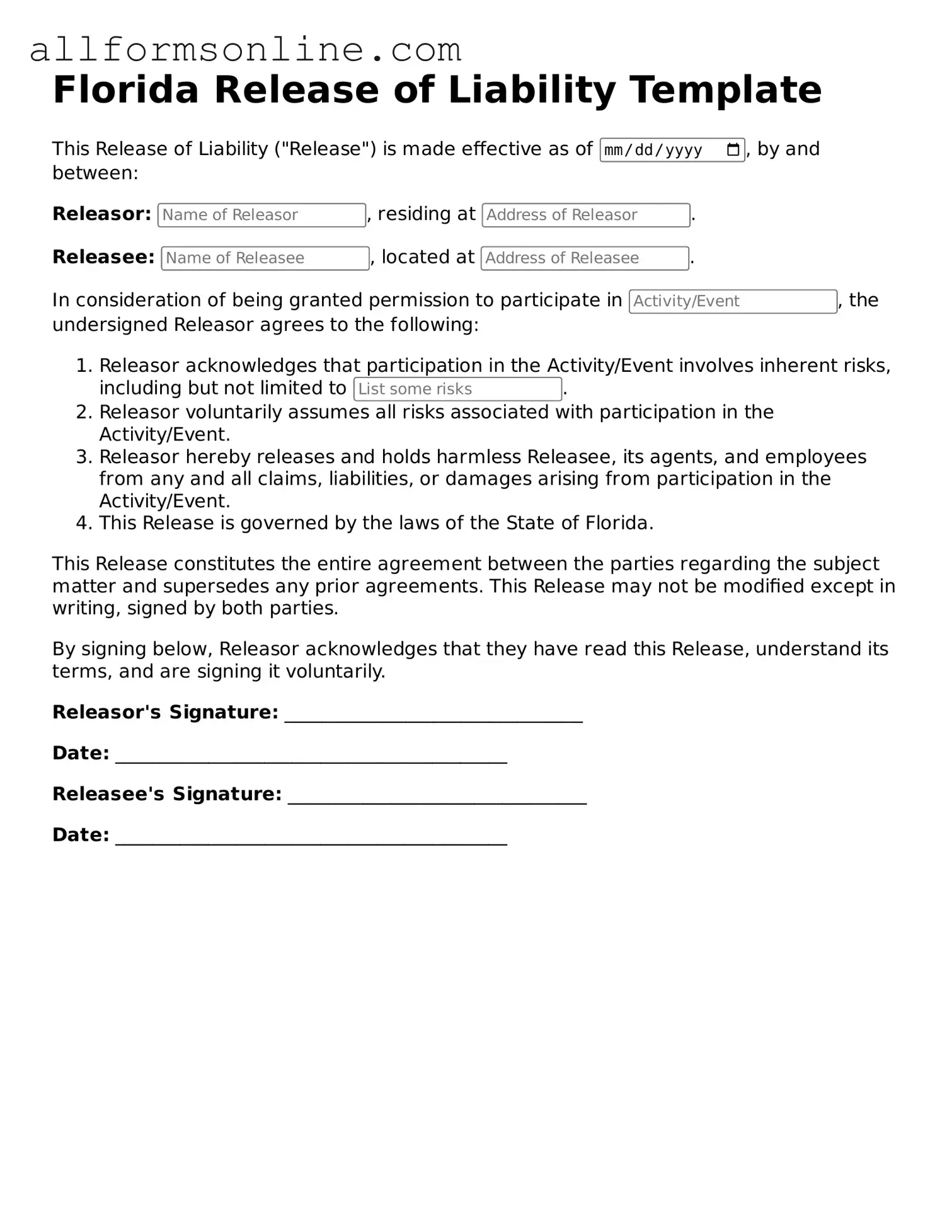What is a Florida Release of Liability form?
A Florida Release of Liability form is a legal document that allows one party to release another from liability for certain actions or events. It is commonly used in activities that carry inherent risks, such as sports, recreational activities, or events where injuries may occur. By signing this form, individuals acknowledge the risks involved and agree not to hold the other party responsible for any injuries or damages that may arise.
Who should use a Release of Liability form?
This form is typically used by organizations, businesses, or individuals who host events or provide activities that could potentially lead to injury. Participants, volunteers, or clients may be asked to sign this form to ensure they understand the risks involved and to protect the host from legal claims. It is important for anyone involved in high-risk activities to consider using this form.
Is a Release of Liability form legally binding in Florida?
Yes, a properly executed Release of Liability form can be legally binding in Florida. However, certain conditions must be met for it to be enforceable. The language of the form must be clear, and it should explicitly state the risks involved. Additionally, the individual signing the form must do so voluntarily and with full understanding of its implications.
Can a Release of Liability form protect against all types of claims?
No, a Release of Liability form does not protect against all claims. While it can shield the host from liability for ordinary negligence, it may not be effective against claims arising from gross negligence or intentional misconduct. Courts may also invalidate a release if it is deemed unconscionable or if the risks were not adequately disclosed.
Do minors need a Release of Liability form?
Yes, if a minor is participating in an activity that requires a Release of Liability form, a parent or legal guardian must sign the form on their behalf. This ensures that the parent or guardian acknowledges the risks and agrees to release liability for their child. It is crucial to ensure that the language is clear and understandable for the guardian signing the document.
How should a Release of Liability form be presented to participants?
The form should be presented in a straightforward manner, allowing participants ample time to read and understand it before signing. It is advisable to explain the purpose of the form and the risks involved in the activity. Transparency is key; participants should never feel rushed or pressured to sign without fully comprehending the document.
What happens if someone gets injured despite signing the Release of Liability form?
If an individual is injured after signing the form, the enforceability of the release will depend on the circumstances surrounding the injury and the specific language of the form. If the injury resulted from negligence that was not covered by the release, the injured party may still have grounds for a legal claim. Each case is unique, and legal advice may be necessary to navigate the situation.
Can a Release of Liability form be revoked after it is signed?
Generally, once a Release of Liability form is signed, it cannot be revoked unilaterally. However, there may be circumstances under which a party can argue that the release should be invalidated, such as if it was signed under duress or if the terms were not clearly explained. It is important to consult with a legal professional if there are concerns about the validity of the release.
Are there any specific requirements for a Florida Release of Liability form?
While there are no specific statutory requirements for a Release of Liability form in Florida, it is advisable to include certain elements to enhance its enforceability. These include a clear description of the activity, an acknowledgment of risks, and a statement of release from liability. Additionally, the form should be signed and dated by the participant or their guardian.
Where can I obtain a Florida Release of Liability form?
A Florida Release of Liability form can often be obtained from legal document websites, law firms, or through professional organizations related to the specific activity. It is crucial to ensure that the form is tailored to the specific circumstances and complies with Florida law. Consulting with a legal professional can help ensure that the form meets all necessary requirements.
